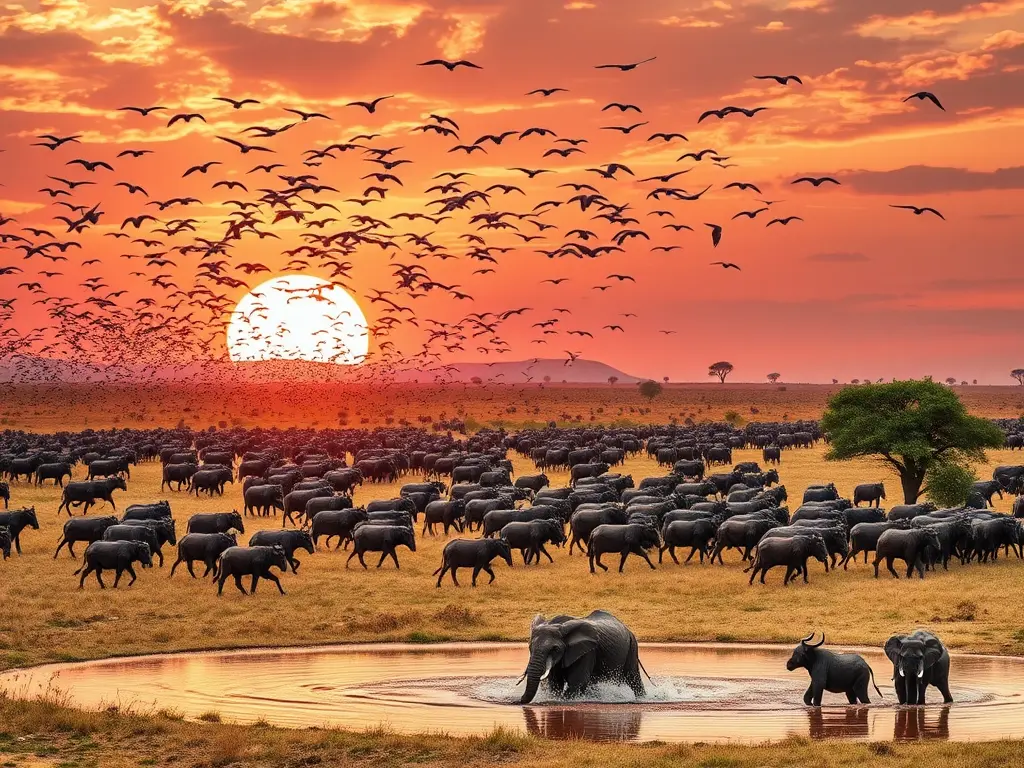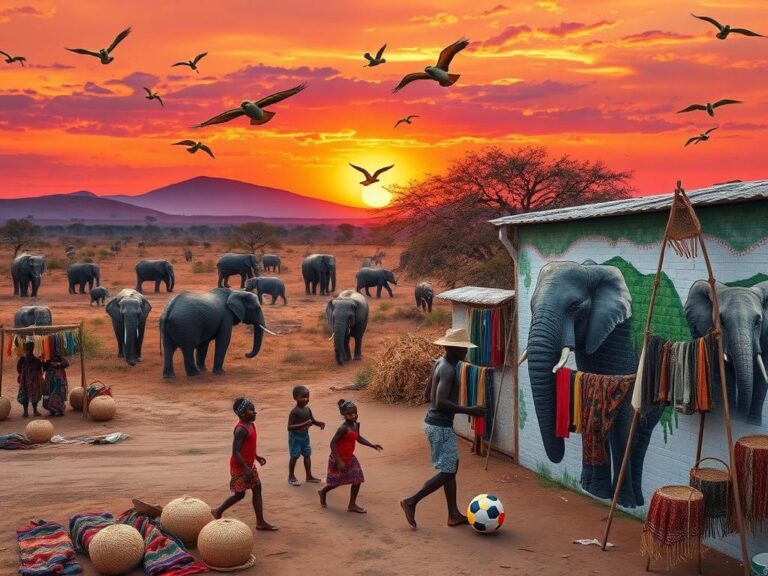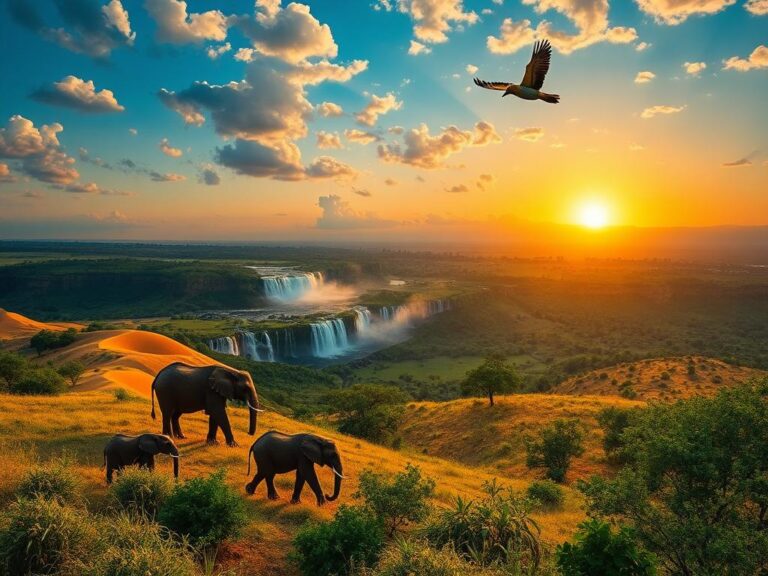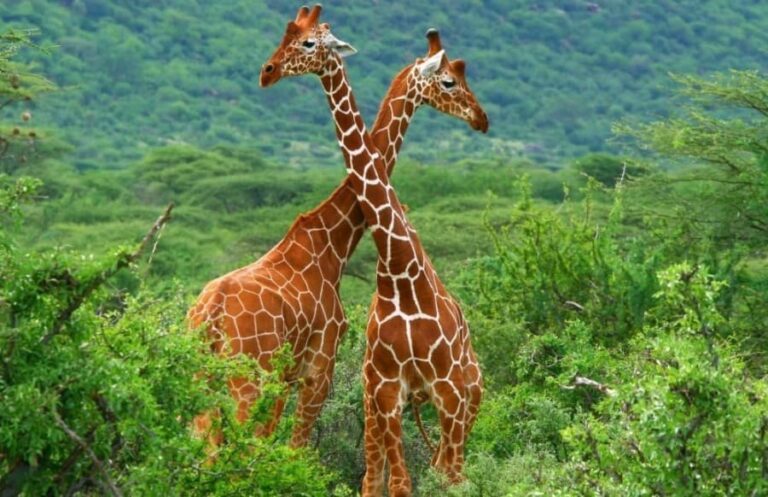
A Comprehensive Guide to the Great Migration: Experience Nature’s Most Incredible Journey
The Great Migration is one of the most spectacular natural events on Earth.
This awe-inspiring phenomenon, where over two million wildebeests, zebras, and other wildlife traverse the Serengeti plains of Tanzania and the Masai Mara in Kenya, has fascinated travelers, scientists, and nature lovers alike.
In this guide, we’ll explore every crucial aspect of the Great Migration, from its timing and routes to the best destinations for witnessing this incredible journey up close.
Whether you’re an adventurous traveler, a wildlife photographer, or simply someone curious about one of nature’s greatest spectacles, this comprehensive guide to the Great Migration has you covered.
What is the Great Migration?
The Great Migration is an annual movement of wildebeests, zebras, and other herbivores in Eastern Africa.
This massive migration covers approximately 1,800 miles of adventure, involving predators and prey battling for survival.
Each year, over two million animals embark on this daunting journey, driven by the search for fresh grazing pastures and clean water.
The sheer scale and organization of this undertaking make the Great Migration a true spectacle.
Why Timing Matters
Understanding the timing of the Great Migration is crucial for anyone wishing to experience it.
The migration is primarily influenced by the seasonal rains, which vary yearly but generally follow a predictable pattern.
- Late April to June: The wildebeests move into the northern Serengeti and cross into the Masai Mara.
- July and August: Witness the dramatic river crossings, as thousands of wildebeest navigate the perilous Nile River.
- October to December: The herds move back south into the Serengeti plains for calving season.
Be sure to plan your trip according to the conditions, as even slight variations can alter the migration pace and routes.
Essential Destinations for Migration Viewing
To catch the complete experience of the Great Migration, choosing the right viewing spots is essential.
Here are some of the top destinations to consider.
Serengeti National Park, Tanzania
The epicenter of the Great Migration, the Serengeti National Park is a UNESCO World Heritage site renowned for its vast savannas and incredible biodiversity.
With its impressive landscapes and rich wildlife, the park offers a superb opportunity for visitors to experience the migration firsthand.
Masai Mara, Kenya
The Masai Mara is famous for its dramatic river crossings, where countless wildebeests leap into the waters, facing crocodiles waiting below.
Witnessing such phenomena is an unforgettable experience for anyone interested in wildlife photography!
Ngorongoro Crater, Tanzania
As a stunning caldera, the Ngorongoro Crater hosts a diverse range of species that gather in this volcanic enclave.
This area is also an excellent spot for viewing the Great Migration, as it acts as a natural amphitheater for wildlife!
Lake Manyara National Park, Tanzania
Lake Manyara is known for its unique ecosystems, including tree-climbing lions and large flocks of flamingos.
This park is an excellent location for combining relaxation and wildlife viewing during the migration season.
Understanding the Migration Patterns
The Great Migration follows the established patterns of water and grazing.
The animals migrate as they search for sustenance, influenced heavily by the rain patterns across East Africa.
| Season | Location | Wildlife Behavior |
|---|---|---|
| January to March | Southern Serengeti | Calving season; baby wildebeests born. |
| April to June | North Serengeti | Animals migrate north; seek grazing. |
| July to August | Masai Mara | Dramatic river crossings. |
| September to December | Southern Serengeti | Return migration; preparation for calving. |
The ecological balance created by these patterns is vital for maintaining healthy populations of various species, allowing everything to coexist harmoniously in nature.
The Role of Predators
The Great Migration attracts numerous predators to the scene, transforming the landscape into a dramatic stage of life and death.
Lions, cheetahs, and hyenas follow the herds, hunting wildebeests and zebras.
This predator-prey dynamic not only shapes the migration experience but also adds an intense layer of fascination for observers.
Experiencing the Migration Up Close
There are several exciting options for experiencing the Great Migration.
- Guided Safaris: Choose from budget to luxury options to get the best out of your migration viewing experience.
- Hot Air Balloon Safaris: Gain a unique perspective as you float above the herds!
- Walking Safaris: Walk alongside an expert guide and appreciate the smaller details of the ecosystem.
It’s essential to select the best method that fits your preferences, comfort, and budget.
Cultural Perspectives on Migration
Local communities within the migratory landscapes offer rich cultural connections to this incredible journey.
Engage with the Maasai culture to learn their traditional practices and their relationship with the land.
Cultural experiences serve as a reminder of the deep-rooted ties between humans and wildlife, enriching the significance of the Great Migration.
Conservation Efforts
The importance of the Great Migration extends beyond tourism and wildlife viewing.
Conservation efforts play a vital role in preserving the delicate ecosystems and protecting species that rely on clean water and expansive landscapes.
Several organizations work diligently to promote sustainable tourism practices, ensuring that the Great Migration can be enjoyed for generations to come.
Conclusion
The Great Migration is truly one of the most breathtaking spectacles of nature.
With the right timing, locations, and understanding of animal behaviors, you can immerse yourself fully in this astounding phenomenon.
As you plan your adventure, remember to respect the ecosystems and practice sustainable tourism, all while appreciating the delicate balance of wildlife survival that the Great Migration represents.
FAQ
What is the best time to see the Great Migration?
The best time is generally between July and October, when the wildebeests cross the Mara River, although the entire migration is a year-round event.
Are there guided tours available for the Great Migration?
Yes, many travel companies offer guided tours, ranging from budget to luxury options, tailored to various interests, such as wildlife photography and cultural experiences.
How can I respect the wildlife during the migration?
Practice responsible tourism by following park rules, maintaining a safe distance from animals, and minimizing noise to avoid disturbing the wildlife.
Can I participate in walking safaris during the migration?
Walking safaris are available in some areas, allowing visitors to experience wildlife from a different angle, under the guidance of experts.
The Great Migration is indeed one of nature’s most remarkable events.
We hope this guide inspires you to witness it for yourself!


